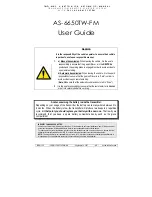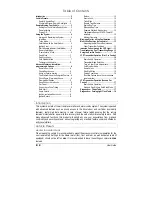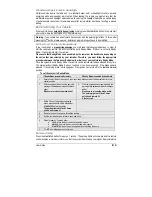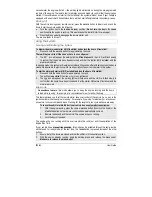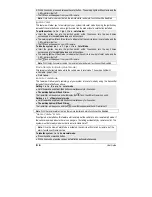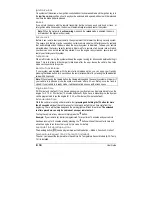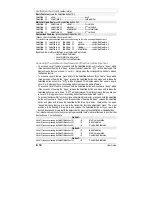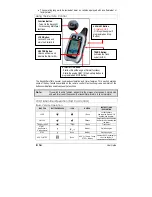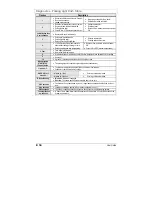
User Guide
P. 13
Level 2
(requires pressing the
FUNCTION
button 2X)
Æ
Multi car operation
Level 3
(requires pressing the
FUNCTION
button 3X)
Æ
Basic features
Option 4:
Level 1
(requires pressing the
FUNCTION
button 1X)
Æ
Basic features
Level 2
(requires pressing the
FUNCTION
button 2X)
Æ
Customized
features
Level 3 (
requires pressing the
FUNCTION
button 3X)
Æ
Multi car operation
Example:
If the multi-level features were set to option 3, the set-up would be as follows:
x
Level 1
Æ
Customized feature
x
Level 2
Æ
Multi car operation
x
Level 3
Æ
Basic
features
The
“
Basic features” are now programmed as level 3 and therefore:
x
To access the aux. 2 feature, the user needs to press on the
FUNCTION
button three (3) times
followed by the
LOCK
button.
x
To access cold weather mode, the user needs to press on the
FUNCTION
button three (3) times
followed by the
START/STOP
button
.
Note:
When using the companion remote, Shift button must be pressed twice quickly the first time.
For instance, to access
customized feature 1
,
press
SHIFT
twice quickly,
SHIFT
and
SHIFT
again
followed by Lock.
Note:
If the multi-level features have been modified from their default state by your installer, the
SHIFT
button may have to be pressed once, twice or three times, according to the option you chose
Intrusion Codes through the LED Light
If there has been an intrusion in the vehicle while it was locked and armed, the LED will provide an
intrusion code matching the type of the intrusion that took place. Disarm the alarm (
UNLOCK
) to
identify the intrusion. The LED intrusion codes are flashed in continuous loops:
2 x = Doors intrusion
3 x = Shock Sense
4 x = Hood
5 x = Panic
6 x = Ignition
7 x = Trunk
The alarm diagnostic by LED projects a LED flash sequence immediately after disarming and will
remain in that state of alarm memory until the ignition is turned ON.
Troubleshooting Poor Transmitting Range
Many factors may affect the operating range of the transmitter. Some of these are:
•
The condition of the battery in the transmitter.
•
The operating environment (for example: downtown radio-frequency noise, airports, cellular
phone towers…)
•
Metal: any type of metal will affect operating range. This includes the metal in the car.
•
The shape of the vehicle can affect range as well; vans in general have an especially poor
range.
•
The shape of the roof and A-pillars brings about considerable radio-frequency deflection (in
this case the signal from the remote control). As a result, the direction in which the vehicle is
facing in relation to the remote control can affect the range. Straight on – standing in front of
the vehicle – generally gives you the greatest range; the second best performance is from the
back. Using the remote control from either side of the vehicle will usually give the lowest
range.
•
The range will be significantly lower in a crowded parking lot than in open space.
•
Always hold the transmitter high, approximately at shoulder height. Holding the transmitter
against your chin will also increase your range: your head acts as an antenna.

